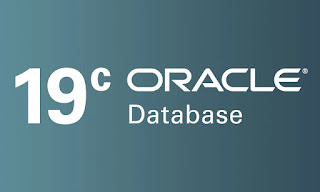An immutable table is a tamper-proof, insert-only table with an associated table-level and row-level retention period. They are similar to blockchain tables, but the rows are not chained using cryptographic hashes.
Blockchain tables were introduced in 21c and backported to 19.10. Immutable tables were introduced to Oracle 21.3 and 19.11 at the same time, so it could be considered a 19c and 21c new feature.
1. Prerequisites
The COMPATIBLE parameter must be set to the correct value before we can use an immutable table.
conn / as sysdba
# 19c
alter system set compatible='19.11.0' scope=spfile;
# 21c
alter system set compatible='21.3.0' scope=spfile;
shutdown immediate;
startup;
Oracle recommend caution when increasing the COMPATIBLE parameter. If in doubt, don't touch it.
2. Create an Immutable Table
In addition to adding the IMMUTABLE keyword to the CREATE TABLE command, there are two immutable clauses.
The NO DROP clause determines how long the table is protected from being dropped. If the table has no rows it can still be dropped. Unlike the initial releases of blockchain tables, the NO DROP clause also prevents the table being dropped via a DROP USER ... CASCADE command.
◉ NO DROP [ UNTIL number DAYS IDLE ]
◉ NO DROP : The table can't be dropped. Be careful about using this setting during testing.
NO DROP UNTIL number DAYS IDLE : The table can't dropped until there have been no new rows inserted for the specified number of days. You may prefer to use 0 or 1 as the number of days during testing this functionality.
The NO DELETE clause determines the retention period. How long each row will be protected from deletion.
NO DELETE { [ LOCKED ] | (UNTIL number DAYS AFTER INSERT [ LOCKED ]) }
◉ NO DELETE : Each row is retained forever. The absence of the LOCKED keyword implies the setting can be changed with the ALTER TABLE command, but it can't. Retention periods can only be increased.
◉ NO DELETE LOCKED : Same as NO DELETE.
◉ NO DELETE UNTIL number DAYS AFTER INSERT : Each row is protected from deletion for the specified number of days, but this setting can be increased using the ALTER TABLE command. Minimum 16 days.
◉ NO DELETE UNTIL number DAYS AFTER INSERT LOCKED : Each row is protected from deletion for the specified number of days, and this setting can't be changed using the ALTER TABLE command. Minimum 16 days.
Putting it all together gives us something like the following.
--drop table it_t1 purge;
create immutable table it_t1 (
id number,
fruit varchar2(20),
quantity number,
created_date date,
constraint it_t1_pk primary key (id)
)
no drop until 1 days idle
no delete until 16 days after insert;
Checking the USER_TAB_COLS view shows us several invisible columns have been added to our column list. The hidden columns are the same as those of a blockchain table, but unlike blockchain tables, only the ORABCTAB_CREATION_TIME$ and ORABCTAB_USER_NUMBER$ columns are populated. The rest of the columns are set to null. The hidden columns are described here.
set linesize 120 pagesize 50
column column_name format a30
column data_type format a27
column hidden_column format a13
select internal_column_id,
column_name,
data_type,
data_length,
hidden_column
FROM user_tab_cols
WHERE table_name = 'IT_T1'
ORDER BY internal_column_id;
| INTERNAL_ COLUMN_ID |
COLUMN_NAME | DATA_TYPE | DATA_LENGTH | HIDDEN_ COLUMN |
| 1 | ID | NUMBER | 22 | NO |
| 2 | FRUIT | VARCHAR2 | 25 | NO |
| 3 | QUANTITY | NUMBER | 22 | NO |
| 4 | CREATED_DATE | DATE | 7 | NO |
| 5 | ORABCTAB_INST_ID$ | NUMBER | 22 | YES |
| 6 | ORABCTAB_CHAIN_ID$ | NUMBER | 22 | YES |
| 7 | ORABCTAB_SEQ_NUM$ | NUMBER | 22 | YES |
| 8 | ORABCTAB_CREATION_TIME$ | TIMESTAMP(6) WITH TIME ZONE | 13 | YES |
| 9 | ORABCTAB_USER_NUMBER$ | NUMBER | 22 | YES |
| 10 | ORABCTAB_HASH$ | RAW | 2000 | YES |
| 11 | ORABCTAB_SIGNATURE$ | RAW | 2000 | YES |
| 12 | ORABCTAB_SIGNATURE_ALG$ | NUMBER | 22 | YES |
| 13 | ORABCTAB_SIGNATURE_CERT$ | RAW | 16 | YES |
| 14 | ORABCTAB_SPARE$ | RAW | 2000 | YES |
14 rows selected.
SQL>
The {CDB|DBA|ALL|USER}_IMMUTABLE_TABLES views display information about immutable tables. It's a view over the SYS.IMMUTABLE_TABLE$ table.
column row_retention format a13
column row_retention_locked format a20
column table_inactivity_retention format a26
SELECT row_retention,
row_retention_locked,
table_inactivity_retention
FROM user_immutable_tables
WHERE table_name = 'IT_T1';
ROW_RETENTION ROW_RETENTION_LOCKED TABLE_INACTIVITY_RETENTION
------------- -------------------- --------------------------
16 NO 0
SQL>
3. Alter an Immutable Table
The documentation suggests the NO DROP clause can be altered using the ALTER TABLE command, as long as the retention period is not reduced. At the time of writing this doesn't seem to work for tables that were initially created with NO DROP UNTIL 0 DAYS IDLE, as all values of days return an error. We currently have a retention period of 0 days for the table. In the following example we try to change it to 100 days, which gives an error. The command is syntactically correct, so I assume this is a bug in this release update.alter table it_t1 no drop until 100 days idle;
Error report -
ORA-05732: retention value cannot be lowered
SQL>
This command will work on tables created with NO DROP UNTIL 1 DAYS IDLE or higher.
Regardless of the current drop delay setting, an attempt to switch to the maximum value of NO DROP causes an ORA-00600 error.
alter table it_t1 no drop;
Error starting at line : 1 in command -
alter table it_t1 no drop
Error report -
ORA-00600: internal error code, arguments: [atbbctable_1], [0], [], [], [], [], [], [], [], [], [], []
This is a problem, as I would expect most people to want to play it safe by starting with a zero day delay, then upping the value later once they are happy with their setup. Starting on day one with a NO DROP seems very risky, as the only way to remove the table is to drop the whole schema.
Assuming it was not defined as locked, the NO DELETE clause can be modified using the ALTER TABLE command, as long as the retention period is not reduced. We currently have a row retention period of 16 days. In the example below we increase that value to 32. When we subsequently attempt to lower the value to 16 it gives an error.
-- Increase to 32 days.
alter table it_t1 no delete until 32 days after insert;
Table IT_T1 altered.
SQL>
-- Decrease to 16 days (fail).
alter table it_t1 no delete until 16 days after insert;
Error report -
ORA-05732: retention value cannot be lowered
SQL>
In the current release, attempting to set the row retention to NO DELETE, which is an increase in the retention period, results in an ORA-00600 error. I assume this is a bug in the current release update.
alter table it_t1 no delete;
Error report -
ORA-00600: internal error code, arguments: [atbbctable_1], [0], [], [], [], [], [], [], [], [], [], []
4. Blocked DML and DDL Operations
As you would expect for an insert-only table, all DML and DDL operations that would result in row data being amended or deleted are prevented for an immutable table.
The following example shows a successful insert, then some unsuccessful DML statements.
-- INSERT
insert into it_t1 (id, fruit, quantity, created_date ) values (1, 'apple', 20, sysdate);
1 row inserted.
SQL> commit;
Commit complete.
SQL>
-- UPDATE
update it_t1 set quantity = 10 where id = 1;
Error report -
SQL Error: ORA-05715: operation not allowed on the blockchain or immutable table
SQL>
-- DELETE
delete from it_t1 where id = 1;
Error report -
SQL Error: ORA-05715: operation not allowed on the blockchain or immutable table
SQL>
Some DDL statements that could alter the contents of the data are also prevented. Here is an example of the TRUNCATE statement.
truncate table it_t1;
Error report -
ORA-05715: operation not allowed on the blockchain or immutable table
SQL>
Extending existing columns is fine, but adding new columns or dropping existing columns is not allowed.
-- Extend column.
alter table it_t1 modify (fruit varchar2(25));
Table IT_T1 altered.
SQL>
-- Add column
alter table it_t1 add (additional_info varchar2(50));
Error report -
ORA-05715: operation not allowed on the blockchain or immutable table
SQL>
-- Drop column.
alter table it_t1 drop column quantity;
Error report -
ORA-05715: operation not allowed on the blockchain or immutable table
SQL>
5. DBMS_IMMUTABLE_TABLE Package
The DBMS_IMMUTABLE_TABLE package is used for maintenance of immutable tables.
The DELETE_EXPIRED_ROWS procedure removes any rows that are beyond the retention period. They can't be removed using a normal DELETE statement.
set serveroutput on
declare
l_rows number;
begin
dbms_immutable_table.delete_expired_rows(
schema_name => 'testuser1',
table_name => 'it_t1',
before_timestamp => null,
number_of_rows_deleted => l_rows);
dbms_output.put_line('Rows Deleted=' || l_rows);
end;
/
Rows Deleted=0
PL/SQL procedure successfully completed.
SQL>
Alternatively, we can limit the deletion by date. The rows will only be deleted if they are outside the retention period, and match the date criteria.
set serveroutput on
declare
l_rows number;
begin
dbms_immutable_table.delete_expired_rows(
schema_name => 'testuser1',
table_name => 'it_t1',
before_timestamp => systimestamp - 60,
number_of_rows_deleted => l_rows);
dbms_output.put_line('Rows Deleted=' || l_rows);
end;
/
Rows Deleted=0
PL/SQL procedure successfully completed.
SQL>
6. Considerations
There are a number of things to consider when using immutable tables.
◉ My overall feeling regarding the 19.3 and 21.3 releases is that the immutable table implementation is kind-of buggy at this point. There are some features that don't work as documented, resulting in error messages that are inaccurate, or aren't trapped properly.
◉ Immutable tables can be indexed and partitioned in the normal manner.
◉ There are a number of general restrictions associated with blockchain tables, described here.
I guess the main question should be, why would you use an immutable table?
◉ If you need an insert-only tamper proof table in your application generally, this could be the solution.
◉ If you want the added security of cryptographic hashes, you might want to consider blockchain tables.
Source: oracle-base.com





0 comments:
Post a Comment